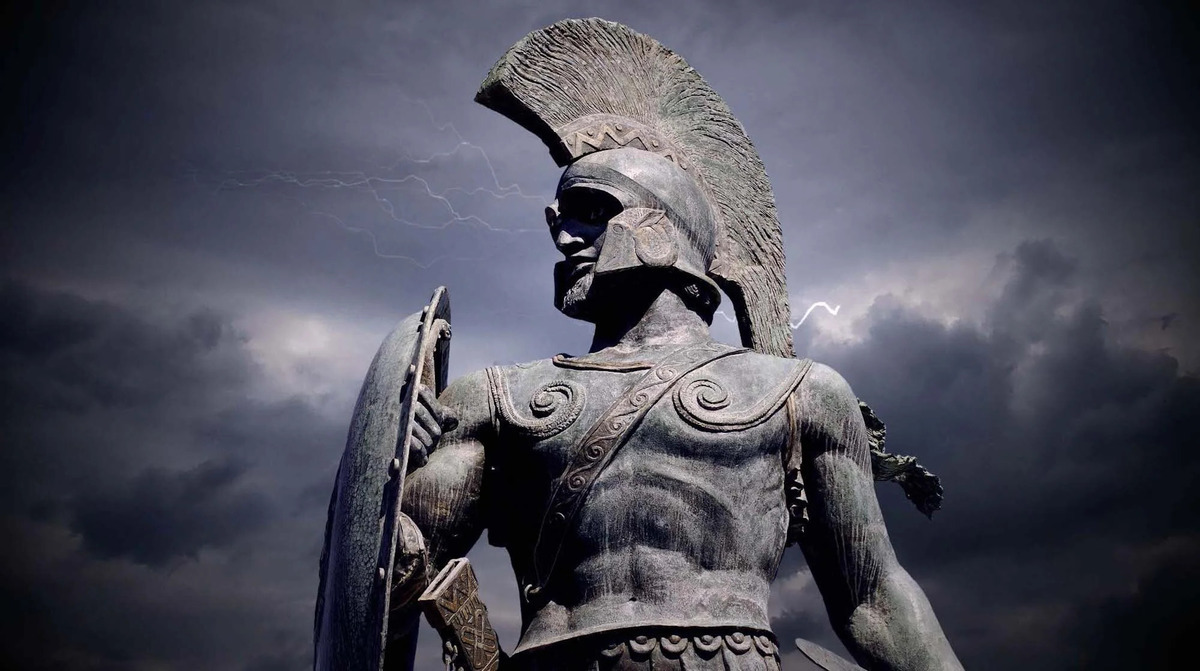
Ever wondered how 300 Spartans could stand against thousands of Persians? The Battle of Thermopylae is a tale of courage, strategy, and sacrifice that has fascinated historians and enthusiasts alike. This legendary clash wasn't just about the numbers; it was a showcase of tactical genius, sheer willpower, and the unyielding spirit of freedom. From the strategic use of the terrain to the iconic last stand, each fact about this historic battle is more astonishing than the last. Ready to be amazed by the incredible feats and strategic masterminds of ancient warfare? Let's dive into the 24 amazing facts about the Battle of Thermopylae that bring this epic confrontation to life.
Key Takeaways:
- The Battle of Thermopylae was a legendary stand of 300 Spartans against a much larger Persian army, showcasing bravery and sacrifice in the face of overwhelming odds.
- Despite being a defeat, the battle inspired Greek unity, delayed the Persian advance, and left a lasting cultural impact on Western military ethos.
The Legendary Stand of 300 Spartans
One of the most celebrated moments in ancient warfare, the Battle of Thermopylae, is renowned for the valiant stand of 300 Spartans against a vastly larger Persian army. This encounter has become a symbol of courage against overwhelming odds.
-
Thermopylae translates to "Hot Gates" in Greek, named for its nearby hot springs. This narrow pass was a strategic choice for defense, allowing the Greeks to utilize the terrain to their advantage.
-
The battle took place over three days in 480 BC during the second Persian invasion of Greece.
-
King Leonidas I led the Spartan contingent, chosen for their superior military training and dedication to the concept of fighting to the death.
The Forces Against Each Other
The disparity in numbers between the opposing forces was staggering, highlighting the bravery of the Greeks.
-
Historical accounts vary, but it's estimated that the Persians numbered between 100,000 to 150,000 soldiers. In contrast, the Greeks had around 7,000 troops at the start of the battle.
-
The Persian army was led by King Xerxes I, who sought to conquer all of Greece as revenge for his father's defeat at the Battle of Marathon.
-
Despite the vast numerical superiority, the narrow pass at Thermopylae neutralized the Persians' advantage, allowing the Greeks to hold them off for two days.
The Betrayal and Its Consequences
The turning point in the battle came from an act of betrayal, demonstrating that even the most valiant efforts can be undone by treachery.
-
A local Greek named Ephialtes betrayed his countrymen by revealing a secret mountain path to the Persians. This allowed them to flank the Spartan-led forces.
-
Upon learning of the betrayal, Leonidas sent away most of the Greek forces, keeping only his 300 Spartans and a few hundred others who refused to leave.
-
The Spartans and their allies fought to their last breath, embodying the ideal of sacrifice for one's country.
The Aftermath and Legacy
The Battle of Thermopylae, despite being a defeat for the Greeks, had far-reaching effects on Greek unity and strategy.
-
The sacrifice of the Spartans and their allies at Thermopylae became a rallying point for all of Greece. It galvanized the city-states to unite against the Persian threat.
-
A monument at the site bears the famous epitaph, attributed to the poet Simonides: "Go tell the Spartans, stranger passing by, that here, obedient to their laws, we lie."
-
The battle's legacy has endured for millennia, inspiring countless works of art, literature, and film, most notably the graphic novel and movie "300."
The Strategic Impact
The Battle of Thermopylae had significant strategic implications beyond its immediate outcome.
-
Though a tactical defeat, the battle delayed the Persian advance, giving the Greek city-states valuable time to prepare for future confrontations.
-
The naval battle at Salamis shortly after Thermopylae saw the Greek fleet decisively defeating the Persians, turning the tide of the war.
-
The unity forged in the fires of Thermopylae and subsequent battles eventually led to the defeat of the Persian invasion.
The Warriors of Thermopylae
The Spartans were not the only Greeks who fought valiantly at Thermopylae.
-
Alongside the 300 Spartans were 700 Thespians who refused to retreat, choosing instead to stand and fight to the death.
-
The Helots, Spartan serfs, also participated in the battle, though their numbers and role are less documented.
-
The sacrifice of these warriors has been immortalized in history, symbolizing the ideals of bravery and sacrifice for the greater good.
The Cultural Impact
The story of Thermopylae has left a lasting mark on Western culture and military ethos.
-
The concept of a "last stand" has become a powerful narrative in military history, often evoking the spirit of Thermopylae.
-
The battle has been used as a moral lesson in courage, duty, and sacrifice, resonating across generations.
-
In modern times, the story of the 300 Spartans has been referenced in discussions of military strategy and leadership.
The Historical Debate
Despite its legendary status, the Battle of Thermopylae is subject to historical debate and analysis.
-
Some historians question the accuracy of the numbers reported for the Persian army, suggesting they may have been exaggerated.
-
The strategic significance of the battle is also debated, with some arguing that it was more of a symbolic victory than a tactical one.
-
Regardless of these debates, the Battle of Thermopylae remains a powerful symbol of resistance and sacrifice, its story echoing through the ages as a testament to the human spirit.
A Final Glance at Thermopylae's Legacy
The Battle of Thermopylae stands as a testament to courage, strategy, and the indomitable spirit of those who fought against overwhelming odds. This historic clash wasn't just about the numbers; it was a showcase of tactical genius, bravery, and the power of unity. Leonidas and his Spartans, along with their allies, may not have won in the traditional sense, but their sacrifice ignited a flame of resistance that eventually led to Greek victory. Their story continues to inspire and teach us the value of standing firm for what we believe in, no matter the challenge. As we reflect on these remarkable events, let's remember the lessons they offer for both personal perseverance and the collective strength of people united for a common cause. Thermopylae's legacy is much more than a tale of battle; it's a timeless narrative of human resilience and heroism.
Frequently Asked Questions
Was this page helpful?
Our commitment to delivering trustworthy and engaging content is at the heart of what we do. Each fact on our site is contributed by real users like you, bringing a wealth of diverse insights and information. To ensure the highest standards of accuracy and reliability, our dedicated editors meticulously review each submission. This process guarantees that the facts we share are not only fascinating but also credible. Trust in our commitment to quality and authenticity as you explore and learn with us.


